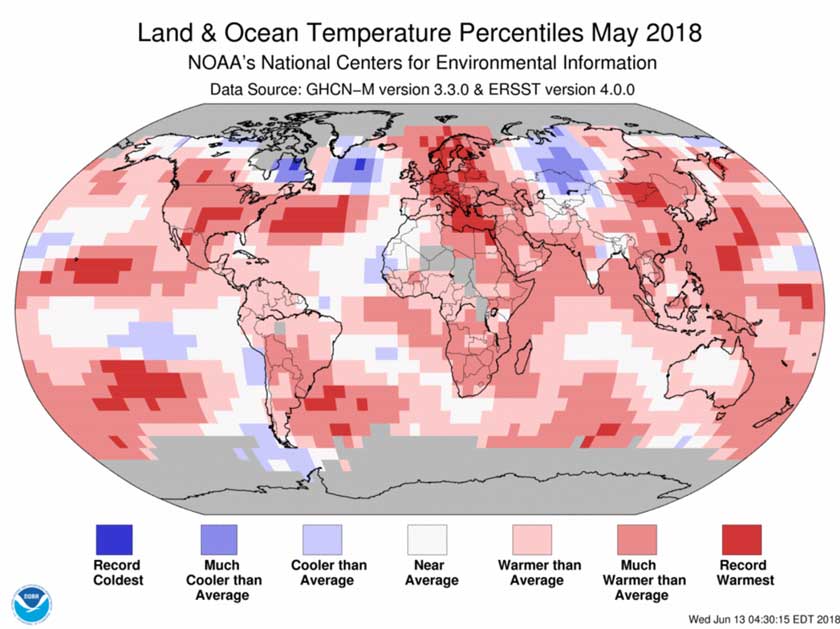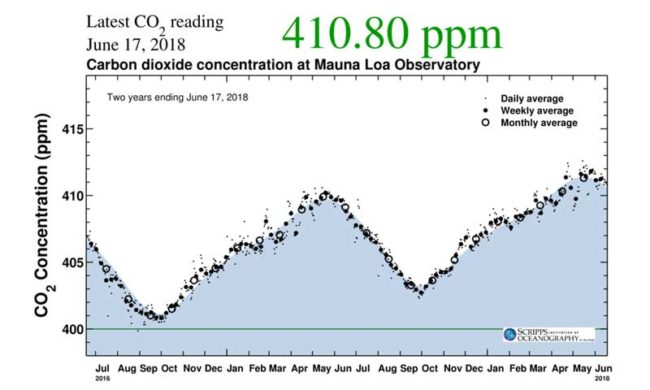When it comes to the topic of Climate Change the IPCC provides quite literally heaps of scientific information. In fact there is so much of it that many a forest positively quivers at the idea of it all being converted from PDF into FDT (Flat Dead Tree). AR5 is available, and AR6 is due in 2022. That is then, but what about right now, do we have anything that tells us what is happening right now?
Yes we do, so let’s take a look.
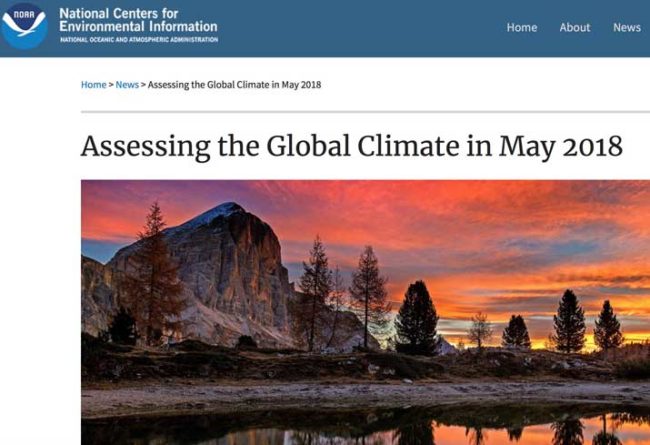 NOAA May 2018 Summery
NOAA May 2018 Summery
Each and every month the NOAA National Center for Environmental Information will issue a global update on what was measured during the previous month. Since it is now June then what is currently available are the details for May 2018.
Was it just an ordinary average month?
Er … no.
What happened in May 2018?
The full NOAA Report for May 2018 is here via this link.
The global land and ocean temperature departure from average for May 2018 was the fourth highest for the month of May in the NOAA global temperature dataset record, which dates back to 1880. The March-May and year-to-date global temperatures were also the fourth warmest such periods on record.

Fire
The following diagram illustrates May 2018 Temperatures.
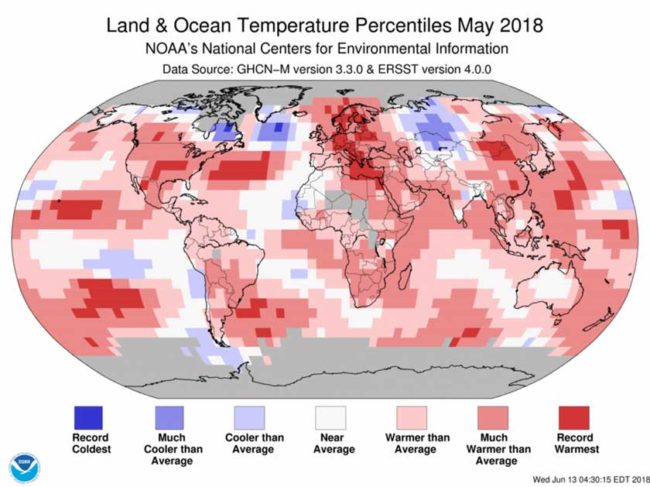 Warmer-than-average conditions engulfed much of the world’s land and ocean surfaces, giving way to the fourth highest May temperature since global records began in 1880.
Warmer-than-average conditions engulfed much of the world’s land and ocean surfaces, giving way to the fourth highest May temperature since global records began in 1880.
The May 2018 combined average temperature over the global land and ocean surfaces was 0.80°C (1.44°F) above the 20th century average of 14.8°C (58.6°F).
The years 2014–2018 rank among the five warmest Mays on record, with 2016 the warmest May at +0.88°C (+1.58°F).
May 2018 also marks the 42nd consecutive May and the 401th consecutive month with temperatures, at least nominally, above the 20th century average.
Ice
The National Snow and Ice Data Center (NSIDC) has the precise details …
Arctic sea ice extent for May 2018 was 12.2 million square kilometers (4.7 million square miles). This was the second lowest May extent in the 39-year satellite record, and is 310,000 square kilometers (120,000 square miles) above May 2016, the record low for the month.
… In Svalbard, the average temperature for May 2018 was 6 degrees Celsius (11 degrees Fahrenheit) above average. By the end of the month, the north and west coasts of Svalbard were largely ice-free and a tongue of open water east of the islands extended northeast to Franz Joseph Land. According to NSIDC data, open water stretched as far north as ~82 degrees N at the end of May.
… In the Chukchi Sea, open water developed to the west of Point Barrow, Alaska throughout the month. This may be in part a result of the inflow of warm waters from the Pacific, where sea surface temperatures were higher than average. It may also be due to the general lack of sea ice in the region that allows the ocean to readily absorb the sun’s energy. Ice retreat was also substantial within the Sea of Okhotsk, and little ice remains in the region. Hudson Bay began to open up, with a significant area of open water in the northwest sector of the bay.
To place May 2018 in context, it is part of an ongoing trend. The fact that May 2018 is above the 2016 May sea ice extent does not in any way imply a reversal, but instead it is simply part of the ongoing downward trend. Here is that trend with May 2018 in context …
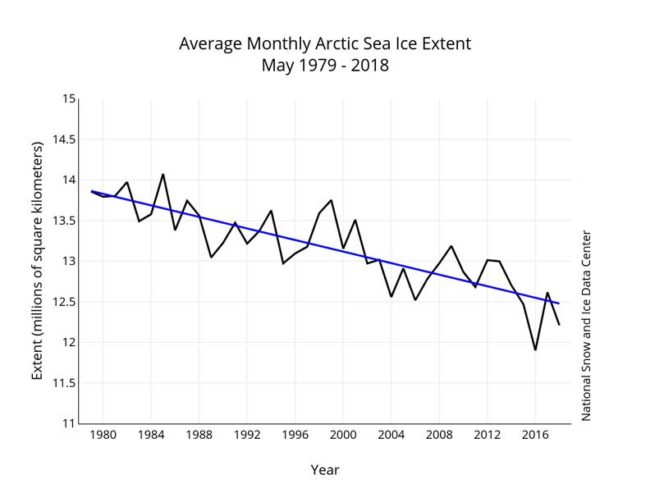 The linear rate of decline for May sea ice extent is 36,000 square kilometers (14,000 square miles) per year, or 2.6 percent per decade relative to the 1981 to 2010 average. Ice loss during the month was 1.7 million square kilometers (656,000 square miles), which was faster than the 1981 to 2010 average loss of 1.5 million square kilometers (579,000 square miles) for the month.
The linear rate of decline for May sea ice extent is 36,000 square kilometers (14,000 square miles) per year, or 2.6 percent per decade relative to the 1981 to 2010 average. Ice loss during the month was 1.7 million square kilometers (656,000 square miles), which was faster than the 1981 to 2010 average loss of 1.5 million square kilometers (579,000 square miles) for the month.
Bottom Line
Climate change continues.
That of course is inevitable because the amount of CO2 within our atmosphere continues to increase, and until that changes in a meaningful way then the ongoing warming will proceed to unfold with dire consequences for us all.
